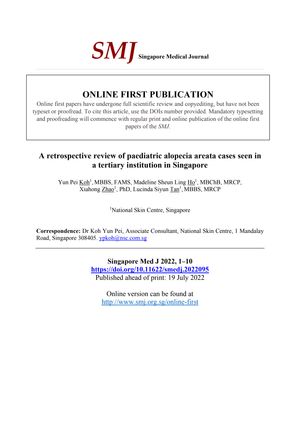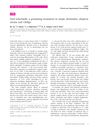A Retrospective Review of Pediatric Alopecia Areata Cases Seen in a Tertiary Institution in Singapore
July 2022
in “
Singapore Medical Journal
”

TLDR Most children with alopecia areata improved with treatment, but those with more hair loss had worse outcomes.
This retrospective review analyzed 182 pediatric cases of alopecia areata (AA) at the National Skin Centre in Singapore from 2013 to 2017, with a mean patient age of 13.0 years and no gender predisposition. The study found that 96.7% of patients showed improvement and 56.0% achieved resolution of AA with treatments such as topical and intralesional corticosteroids. However, patients with multiple patches or diffuse hair loss had poorer outcomes. Complications were minimal, with 1.6% developing scalp abscesses and 7.2% experiencing skin atrophy from intralesional steroid injections. Topical immunotherapy was used in severe cases with variable regrowth rates. The review concluded that while most pediatric patients with AA improve with treatment, extensive disease correlates with a poorer prognosis. It also emphasized the importance of personalized treatment plans and the potential of newer treatments like JAK inhibitors, PDE4 inhibitors, and cytokine-targeted therapies, despite challenges in conducting randomized controlled trials in children.

